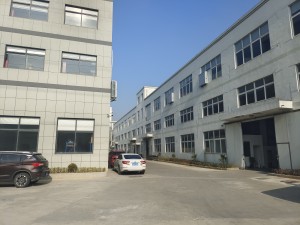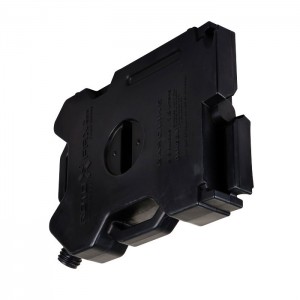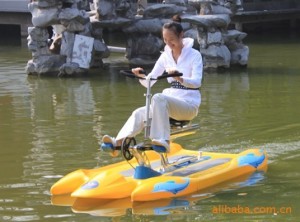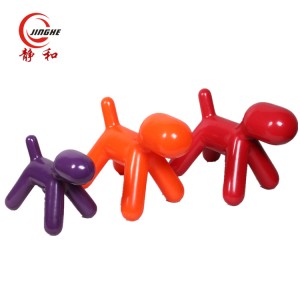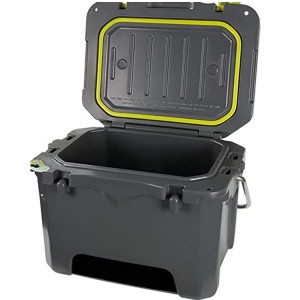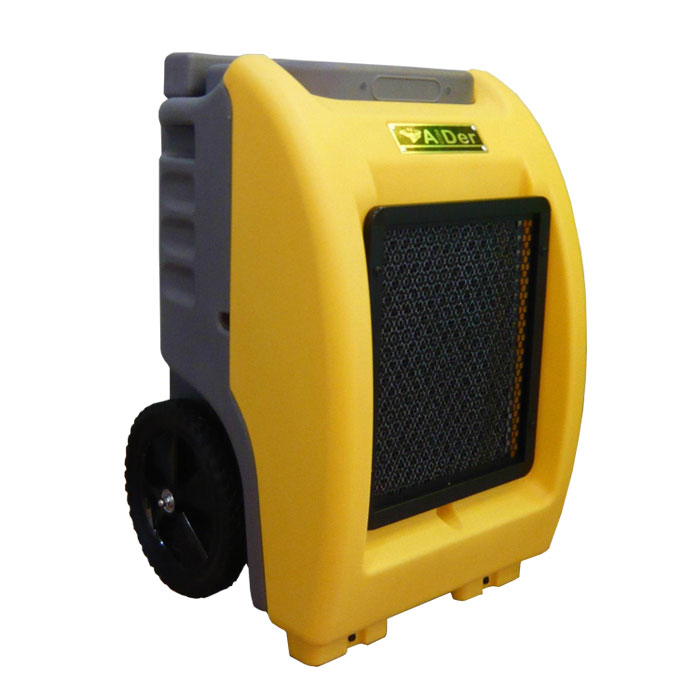一、Development of Rotational Molding
In foreign countries, rotational molding has been one of the widely used plastic molding processes. In the 1940s, PVC paste was used to produce toys such as plastic balls through rotational molding. In the 1950s, the polyethylene rotational molding process using low-density polyethylene powder resin as raw material was developed to produce industrial products such as polyethylene storage tanks and large pipes, which greatly promoted the development of the rotational molding process. Since then, nylon, polycarbonate, ABS and other plastics have also been molded by the rotational molding process. By the early 1970s, rotational molding had become a large-scale plastic molding process.
In 1971, there were more than 50 companies engaged in the production of rotational molding products in the UK, and about 70 manufacturers of rotational molding thermoplastics; There are more than 20 companies engaged in rotational molding processing in the European continent, including companies from Germany, France, Switzerland, Norway, Austria, Denmark and other countries.
In the early 1970s, the UK was able to provide a roll molding machine capable of producing containers with a capacity of 18000L; The Netherlands has produced a large cylindrical tank with a diameter of 2.1m and a length of 4.8m. The tank is 540kg and the wall thickness is 25mm. In 1970, the total volume of rotational molding products in Europe reached more than 15000t, including about 7000t in Britain.
In 1970, more than 500 units in the United States were engaged in the production of rotational molding products. They had more than 500 rotational molding machines, and the capacity of rotational molding containers had exceeded 10000 L (2400 gallons); The maximum plastic parts produced by the roll molding machine is 4.6 × four point six × 2.1m。
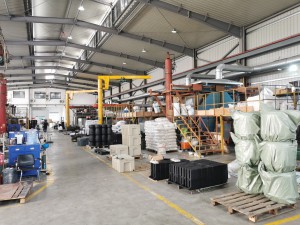 In the 1960s, the rapid development of rotational molding technology was closely related to the improvement of resin properties and rotational molding equipment. During this period, many special plastics for rotational molding were developed, such as PE P-320, Raychem Flamolin 771 and other polyethylene resins developed by United Carburization Company. FE P-320 is a kind of low-density polyethylene, which has good flow molding performance of low-density polyethylene resin and low temperature impact toughness, chemical resistance and stress cracking resistance of high-density polyethylene resin; Raychems F1amo1in 711 is a cross-linked polyethylene resin for rotational molding. In addition to being cross-linked, it also has self extinguishing property. The famous roll molding cross-linked polyethylene resin Marlex Cl-100 of Philips was also developed during this period.
In the 1960s, the rapid development of rotational molding technology was closely related to the improvement of resin properties and rotational molding equipment. During this period, many special plastics for rotational molding were developed, such as PE P-320, Raychem Flamolin 771 and other polyethylene resins developed by United Carburization Company. FE P-320 is a kind of low-density polyethylene, which has good flow molding performance of low-density polyethylene resin and low temperature impact toughness, chemical resistance and stress cracking resistance of high-density polyethylene resin; Raychems F1amo1in 711 is a cross-linked polyethylene resin for rotational molding. In addition to being cross-linked, it also has self extinguishing property. The famous roll molding cross-linked polyethylene resin Marlex Cl-100 of Philips was also developed during this period.
In order to meet the needs of preparing large rotational molding products, many machines capable of forming large rotational molding products were developed in the late 1960s, which can effectively use the floor space and heat energy. In 1970, more than half of the roll molding machines sold in the market had a rotary diameter of more than 1.75m. In addition, the control level of the machine has also been improved to varying degrees. For example, the three arm rotational molding machine McNeil Auronismodel 3000-200 can control the heating and cooling cycles of each arm separately, so that products of different sizes and materials can be simultaneously rotational molded. Its rotary diameter is up to 5m, and the total weight of mold and resin that each arm can bear is about 13500N; The jacket type roll molding machine with good heat transfer effect and small floor area was also designed and manufactured during this period.
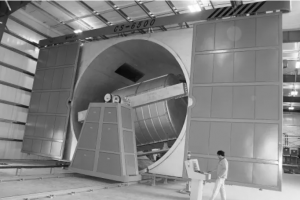 The development and research of rotational molding in China can also be traced back to the 1960s. By the late 1960s, Shanghai toy industry had begun to use the rotational molding method to produce soft PVC pellets annually; The third plant of Shangsu Plastics has successfully trial produced 200L and 1500L roll molded polyethylene containers; In the mid-1970s, Beijing FRP Research Institute successfully developed the rotational plastic nylon container and applied it in forest fire extinguishers and other products. However, the real large-scale industrial production came after the introduction of advanced rotational molding equipment and technology from abroad in the middle and late 1980s. At present, it has been able to prepare large plastic products such as chemical storage tanks with a container capacity of more than 20000L and high plastic all plastic yachts.
The development and research of rotational molding in China can also be traced back to the 1960s. By the late 1960s, Shanghai toy industry had begun to use the rotational molding method to produce soft PVC pellets annually; The third plant of Shangsu Plastics has successfully trial produced 200L and 1500L roll molded polyethylene containers; In the mid-1970s, Beijing FRP Research Institute successfully developed the rotational plastic nylon container and applied it in forest fire extinguishers and other products. However, the real large-scale industrial production came after the introduction of advanced rotational molding equipment and technology from abroad in the middle and late 1980s. At present, it has been able to prepare large plastic products such as chemical storage tanks with a container capacity of more than 20000L and high plastic all plastic yachts.
二、Application of Rotational Molding
With the development of rotational molding technology, the application scope of rotational molding products has been expanded continuously. Till now, the application of rotational molding products has been very extensive. Some representative applications can be exemplified as follows.
1. Rotational plastic parts for containers
This kind of plastic products are widely used in water storage tanks, tanks for various liquid chemicals (such as acid, alkali, salt, chemical fertilizer, pesticide, etc.), gasoline containers (gasoline tanks and fuel tanks for automobiles and aircraft), battery shells, etc.
2. Rotational parts for automobiles
It mainly applies polyethylene and polyvinyl chloride paste resin, and roll molding various pipe fittings, such as air conditioning elbow, backrest, handrail, etc.
3. Sports equipment and various substitutes
There are mainly various PVC paste roto molded parts, such as water polo, floating ball, bicycle seat cushion, small boat and shock absorber between ship and dock. The rotogrammed crosslinked polyethylene barrel made from Philips’ rotogrammed crosslinked polyethylene tree “Maricxcl-100″ can compete with the metal barrel, and it has good chemical corrosion resistance and low maintenance costs. Rotational palletizing tray was commercialized in the United States, Japan and other countries in the early 1970s; Surfboards, boats, etc. are also roll molded parts often mentioned in the literature.
4. Toys, models, handicrafts, etc
Because the rotational mould can be manufactured by precision casting, electroforming and other processes; The surface of rotational molded parts has a good “copy” effect on the fine structure of the surface of the mold cavity. Therefore, the rotational molding method can make the products very delicate and beautiful. Therefore, it is often used to make products with great viewing value, especially toys, models, handicrafts, etc.
5. In addition to the above, there are also various boxes, shells, large pipes and other products widely used for rotational molding products, such as turnover boxes, garbage cans, machine shells, protective covers, lampshades, bathrooms, toilets, telephone rooms, yachts, etc.
Rotational molding products have been widely used in liquid chemical storage and transportation, chemical enterprises, industrial coating, washing tanks and reaction tanks in rare earth preparation, as well as river and sea buoys, domestic water tanks and other fields.
Post time: Nov-15-2022





